West Maui : Kāʻanapali North, Maui
Attention: The forecast is not accurate when a tsunami, tropical storm or cyclone watch/warning is in effect. For these events, please seek information for either tsunamis or tropical storms/hurricanes. In case of a possible inundation event, please consult with local authorities and emergency responders to seek further information and direction.

The Solid Dark Blue Curve ![]() and Solid Cyan Curve
and Solid Cyan Curve ![]() display the Past and Forecast Sea Level for the previous 3 days and the next 6 days, respectively, relative to Mean Lower Low Water (MLLW, a typical NOAA datum). Past Sea Level is obtained from a combination of a local tide model with the long-period, non-tidal sea level variability being observed in real-time at Kahului Harbor. Grey vertical lines provide the associated times of high tides.
display the Past and Forecast Sea Level for the previous 3 days and the next 6 days, respectively, relative to Mean Lower Low Water (MLLW, a typical NOAA datum). Past Sea Level is obtained from a combination of a local tide model with the long-period, non-tidal sea level variability being observed in real-time at Kahului Harbor. Grey vertical lines provide the associated times of high tides.
The Hatched Cyan Curve ![]() shows the forecast maximum height (or, run-up height) reached by waves along the shoreline in the Kāʻanapali North region for the next 6 days, relative to MLLW. The run-up height will always exceed or equal the tide plus background sea level described above, because the waves are riding on top of that sea level. The Hatched Dark Blue Curve
shows the forecast maximum height (or, run-up height) reached by waves along the shoreline in the Kāʻanapali North region for the next 6 days, relative to MLLW. The run-up height will always exceed or equal the tide plus background sea level described above, because the waves are riding on top of that sea level. The Hatched Dark Blue Curve ![]() shows a history of the last forecast run-up height determined for each particular time of the past 3 days; this curve provides context to show how the forecast run-up for the next 6 days differs. For more information on how the forecasts are produced, see the Details tab on the Overview Page.
shows a history of the last forecast run-up height determined for each particular time of the past 3 days; this curve provides context to show how the forecast run-up for the next 6 days differs. For more information on how the forecasts are produced, see the Details tab on the Overview Page.
If the forecast run-up extends into the red shaded region on the plot, the waves are expected to at least become a disruption for beach activities. The higher the forecast the more severe the expected effects. One or more of the following threshold levels is/are shown in the red shaded area in the plot above: (a) Light Impacts, (b) Hazardous Impacts, (c) Critical Impacts. Click on the Run-up Examples tab for descriptions of the possible hazards.
Notifications
If you would like to receive notifications when the forecast for Kāʻanapali North (or any other West Maui region) reaches the impact stage, please register here:
The north Kāʻanapali region reaches from Honoapiʻilani Park (just north of Honua Kai Resort) to Puʻu Kekaʻa (Black Rock). The region is densely developed, including many multi-story resorts and condominiums. Newer development at the north end of the region is more setback from the shoreline than the older development at the south end of the region. The medium to wide, but seasonally variable, beach is continuous along the entire length of this region and includes vegetated dunes. Seasonal variation in beach width results from longshore transport of sand by waves, occasionally resulting in narrow beaches at different locations at different times of the year. The deeper fringing reef in this area provides little protection from waves along the shoreline. Some buildings and infrastructure that are close to the shoreline in the south end of the region are threatened by impacts from high waves and erosion.
Run-up Thresholds
(a) Light Impact – beach and nearshore activities disrupted as occasional waves may sweep the beach slopes or intermittently reach vegetation.
(b) Hazardous Impact – heavy wave action on beach slopes; likely flooding across the entire beach; likely run-up to the vegetation and onto the vegetated dunes at narrow beach locations with occasional overtopping of dunes; and/or noticeable beach sand movement alongshore or offshore/onshore.
(c) Critical Impact – waves regularly sweeping the entire beach area; likely breaching of dunes where the beach is narrow, with flooding of adjacent land and structures; and/or significant erosion of the beach, dunes, and vegetation.
Run-up Examples
(a) Light Impact Event — June 15-16, 2019 | North Kāʻanapali

Photo Credit: Ingrid Eichenbaum. (orange star on map)

Photo Credit: Ingrid Eichenbaum. (orange star on map)

Photo Credit: Ingrid Eichenbaum. (orange star on map)
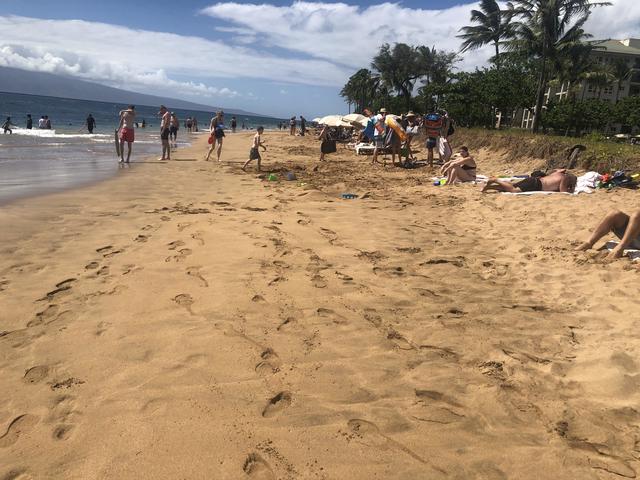
Photo Credit: Ingrid Eichenbaum. (blue star on map)

Photo Credit: Ingrid Eichenbaum. (blue star on map)
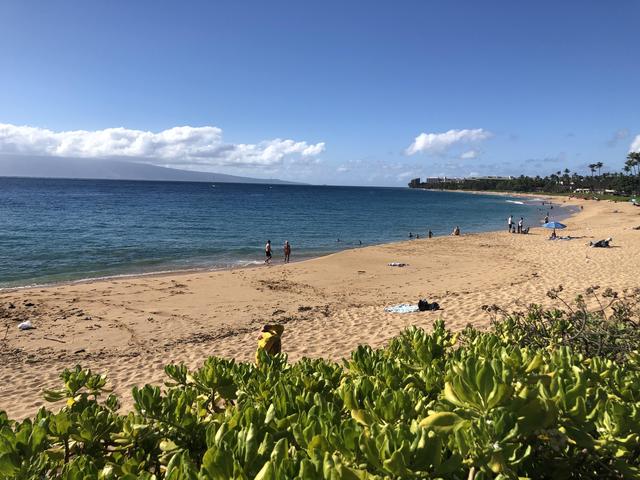
Photo Credit: Ingrid Eichenbaum. (yellow star on map)
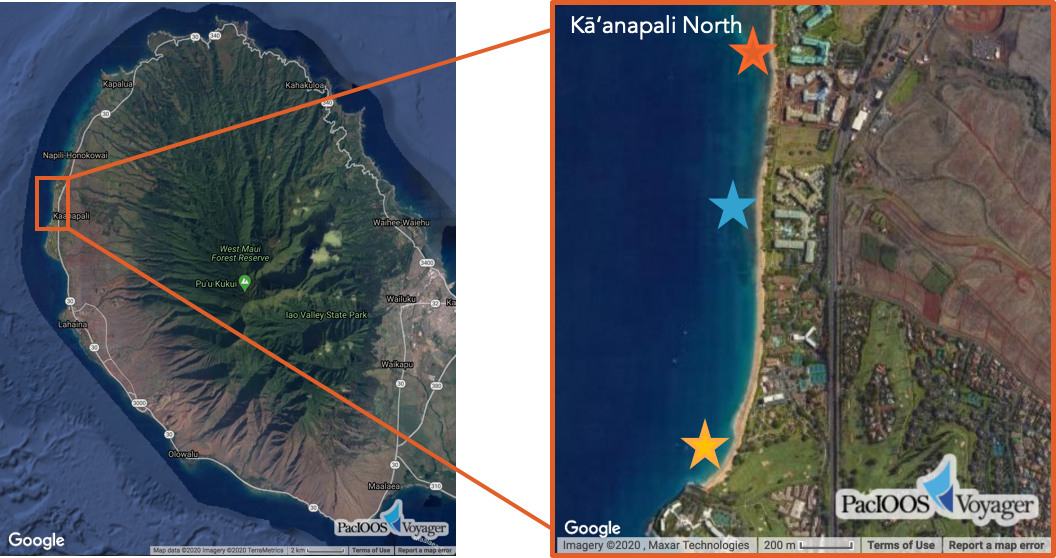
(a) Light Impact Event — July 2-3, 2019 | North Kāʻanapali

Photo Credit: Don McLeish (Hawaiʻi and Pacific Islands King Tides Project).

Photo Credit: Joseph Eichenbaum (Hawaiʻi and Pacific Islands King Tides Project).

Photo Credit: Ingrid Eichenbaum (Hawaiʻi and Pacific Islands King Tides Project).

(a) Light Impact Event — July 14, 2019 | North Kāʻanapali
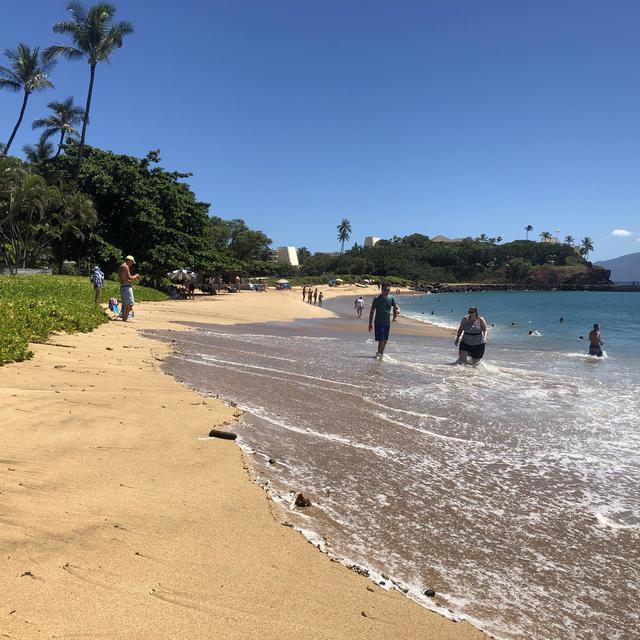
Photo Credit: Joseph Eichenbaum.

(a) Light Impact Event — July 3, 2020 | North Kāʻanapali

Photo Credit: Joseph Eichenbaum (Hawaiʻi and Pacific Islands King Tides Project) (yellow star on map).
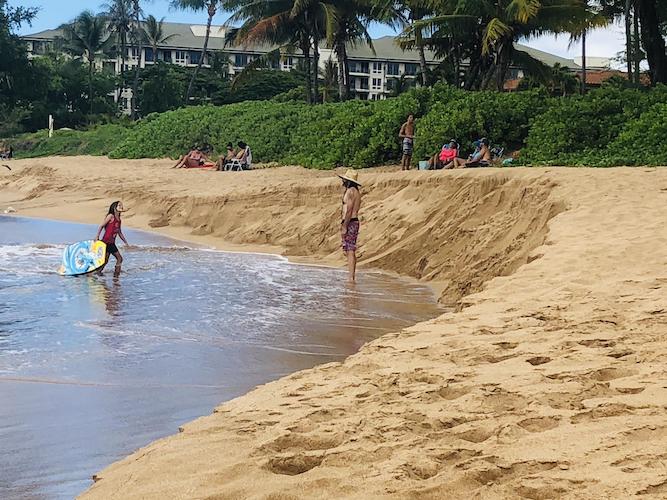
Photo Credit: Joseph Eichenbaum (Hawaiʻi and Pacific Islands King Tides Project) (blue star on map).

Photo Credit: Joseph Eichenbaum (Hawaiʻi and Pacific Islands King Tides Project) (orange star on map).

Get Involved!
We continue to collect photo documentation to fine-tune the model (if necessary) and to identify the impacts of these run-up events along the West Maui shoreline. We are specifically interested in photos around peak tides or swells, or anytime waves overtop beach features. If possible, capture the maximum extent of water running up the shoreline. The contributions from you, our citizen scientists, greatly contribute to establishing accurate thresholds for the model. Mahalo for your support!
Please submit your photos at:
To view photo submissions, please check out:
An archive of previous forecast plots can be accessed below. Select a day of interest from the calendar, or use the slider tool to quickly navigate through all available images. Two historical forecast plots are provided for each day, generated at 6:00 AM and 6:00 PM of the local time zone. To view the most recent forecast and to learn more about the different components of the graph, please go to the Forecast tab.
date: :

Loading archive...










